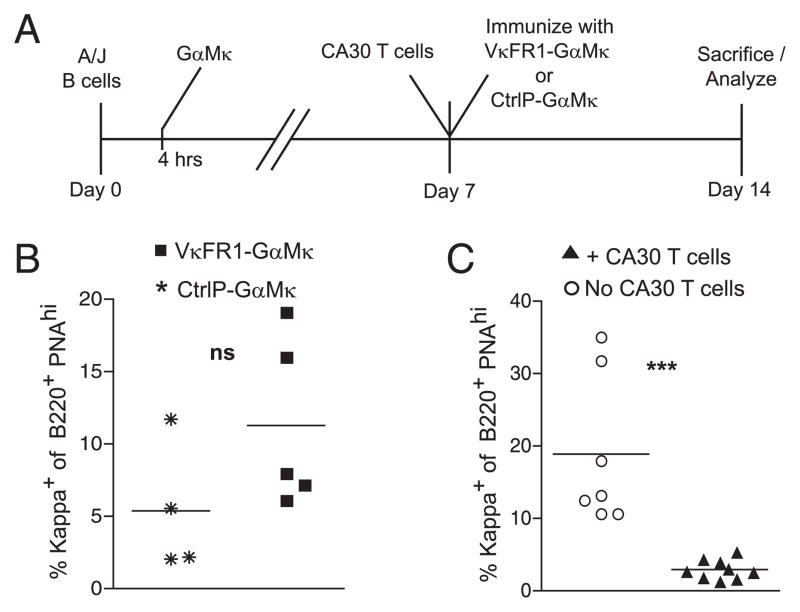FIGURE 7.
CA30 T cells do not impair the GC response by B cells that exogenously acquire the VκFR1 peptide. A, Adoptive transfer scheme designed to provide CA30 T cell help to A/J B cells presenting exogenously derived VκFR1 peptide. κ−/− mice received 5.0 × 104 A/J splenocytes on day 0. Four hours after transfer, recipients were immunized i.p. with 50 μg GαMκ precipitated in alum. On day 7, both groups received 2.5 × 105 CA30 κ−/− LN cells, followed by i.p. immunization with either VκFR1-GαMκ or CtrlP-GαMκ in alum. Mice were sacrificed on day 14. B, Percentage of total B220+ PNAhigh (GC) splenocytes that were κ+ on day 14 in mice immunized with VκFR1-GαMκ (■) or CtrlP-GαMκ (*) on day 7. Data are representative of two independent experiments with four to five mice per group. C, Percentage of total B220+ PNAhigh (GC) splenocytes that were κ+ on day 14 following transfer of κTg splenocytes (day 0), followed by day 7 CA30 transfer (▲), compared with no CA30 transfer (○), the standard adoptive transfer protocol described in Fig. 1A. Results represent data from two independent experiments with three to five mice per group. Symbols in both B and C represent individual mice, with lines representing mean values. Statistical differences are indicated. See also Supplemental Fig. 4. ***p ≤ 0.001, as determined by a two-tailed t test. ns, not significant.

